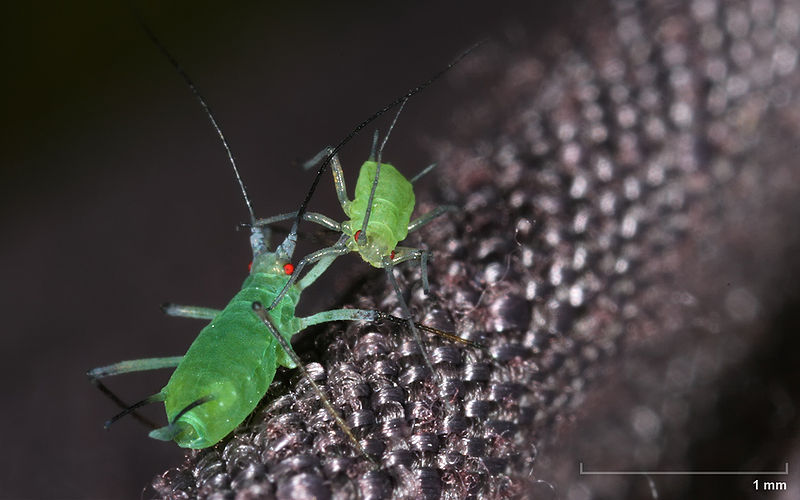Aphid insects’ ‘battery’ backup stores solar energy
August 20, 2012
Aphids may have a rudimentary sunlight-harvesting system, using the energy for metabolic purposes, Nature News reports.
Aphids are unique among animals in their ability to synthesize pigments called carotenoids. Entomologists at the Sophia Agrobiotech Institute in France suggest that in aphids, these pigments can absorb energy from the Sun and transfer it to the cellular machinery involved in energy production.
Although unprecedented in animals, this capability is common in other kingdoms. Plants and algae, as well as certain fungi and bacteria, also synthesize carotenoids, and in all of these organisms the pigments form part of the photosynthetic machinery.
Green aphids, which contain high levels of carotenoids, make significantly more ATP than do white ones, which are almost devoid of these pigments. Moreover, ATP production rose when the orange insects — which contain an intermediate amount of carotenoids — were placed in the light, and fell when they were moved into the dark.
The researchers went on to crush the orange aphids and purify their carotenoids, demonstrating that it was these extracts that could absorb light and pass this energy on.
They speculate that a battery-like back-up might help them in times of environmental stress, such as when they are migrating to a new host plant.
Could this be scaled up for storing solar energy? — Ed.
